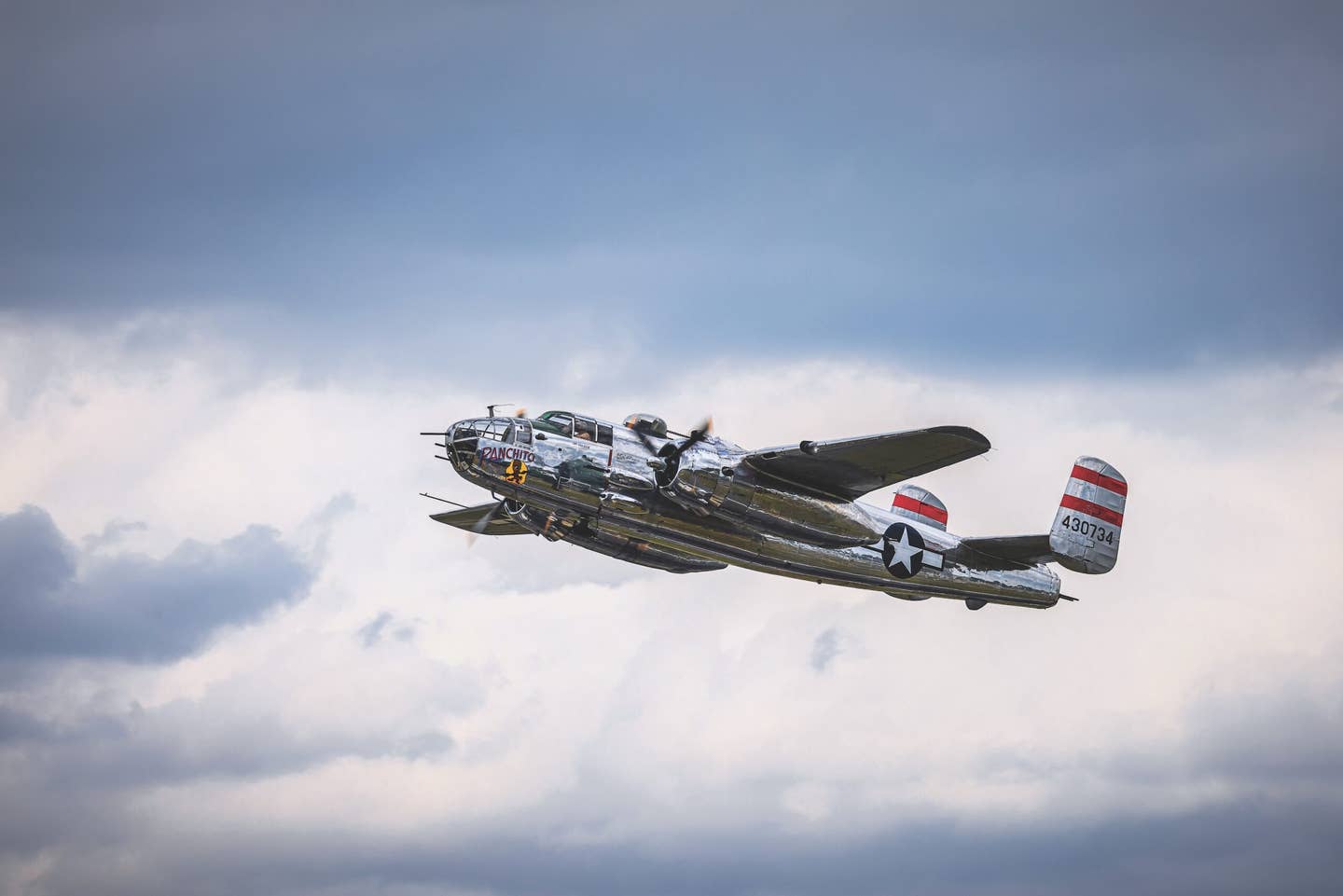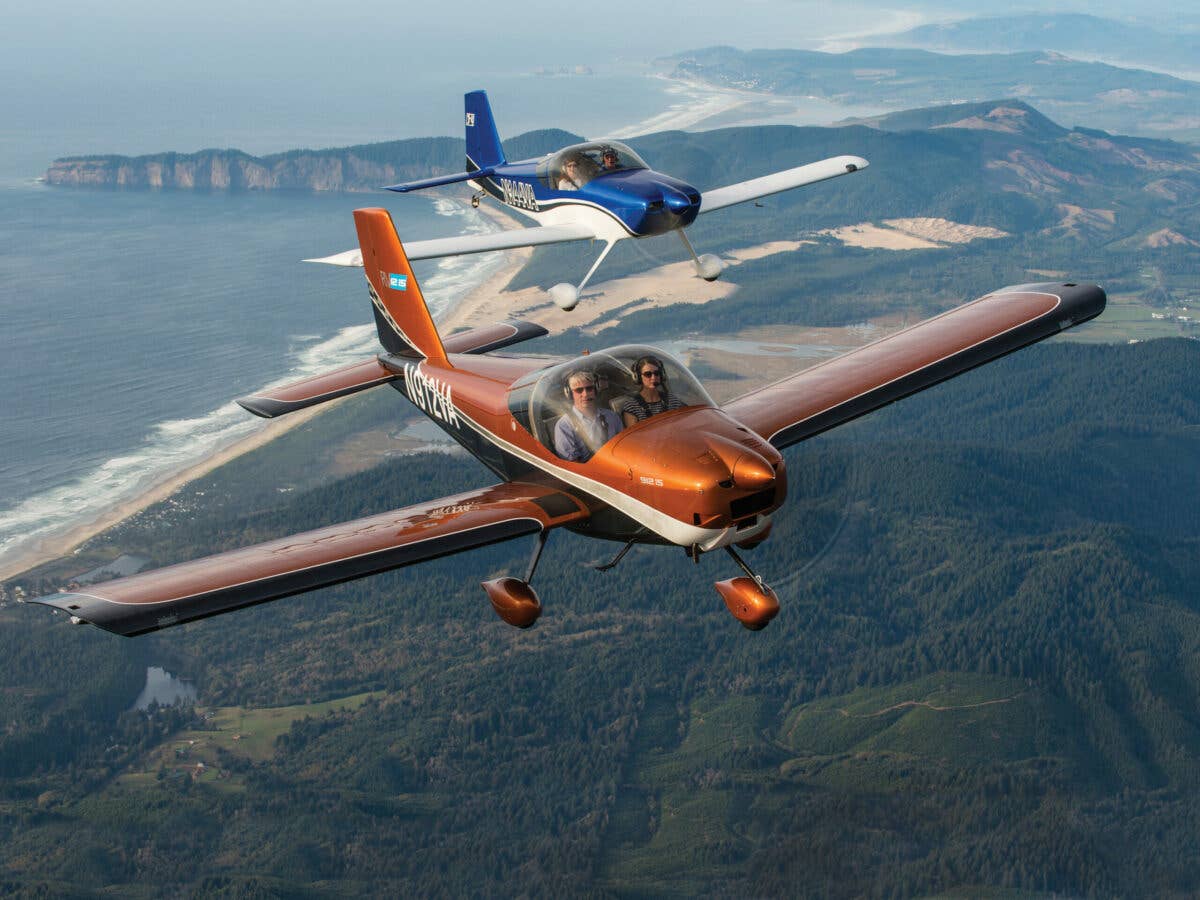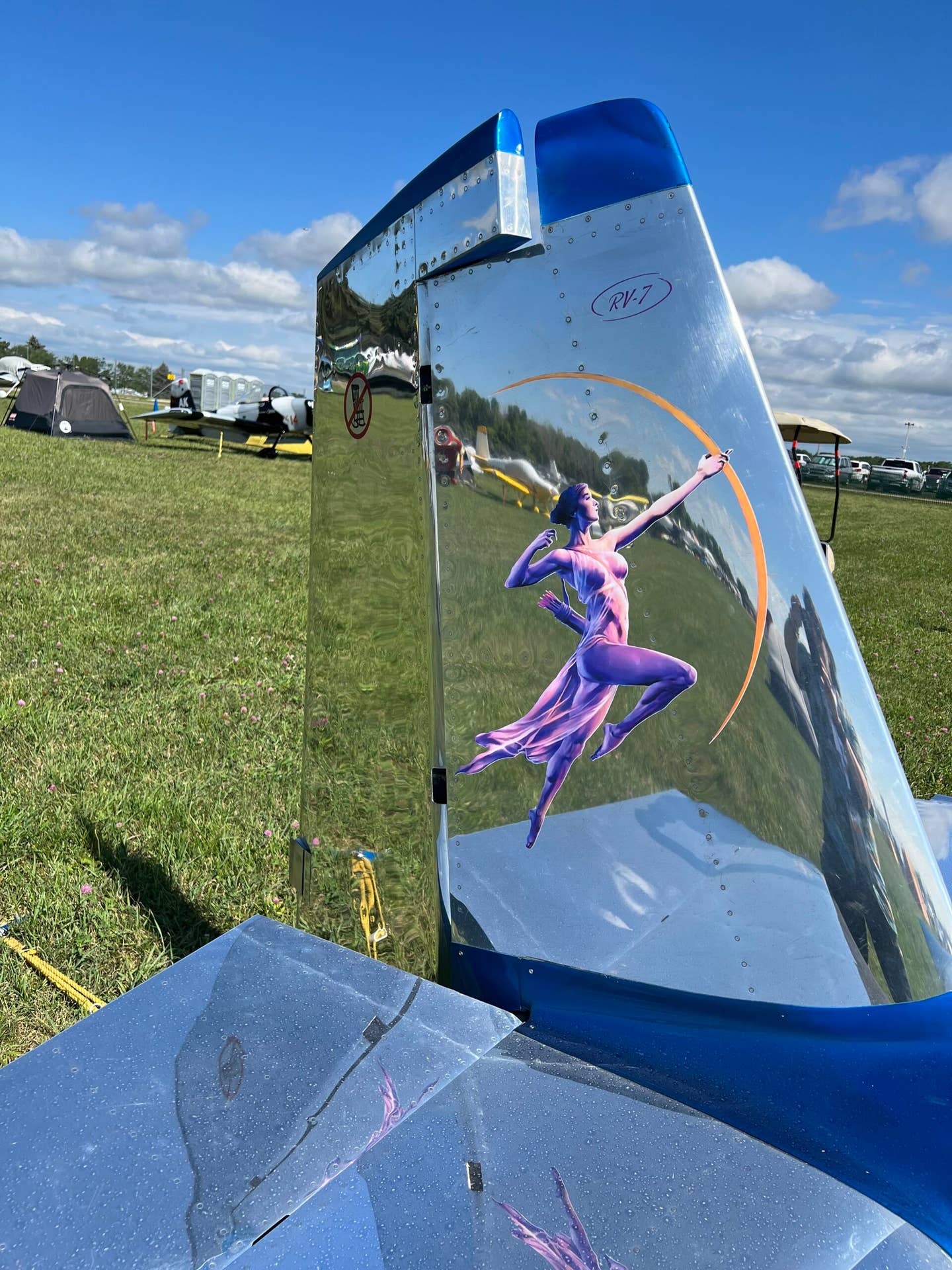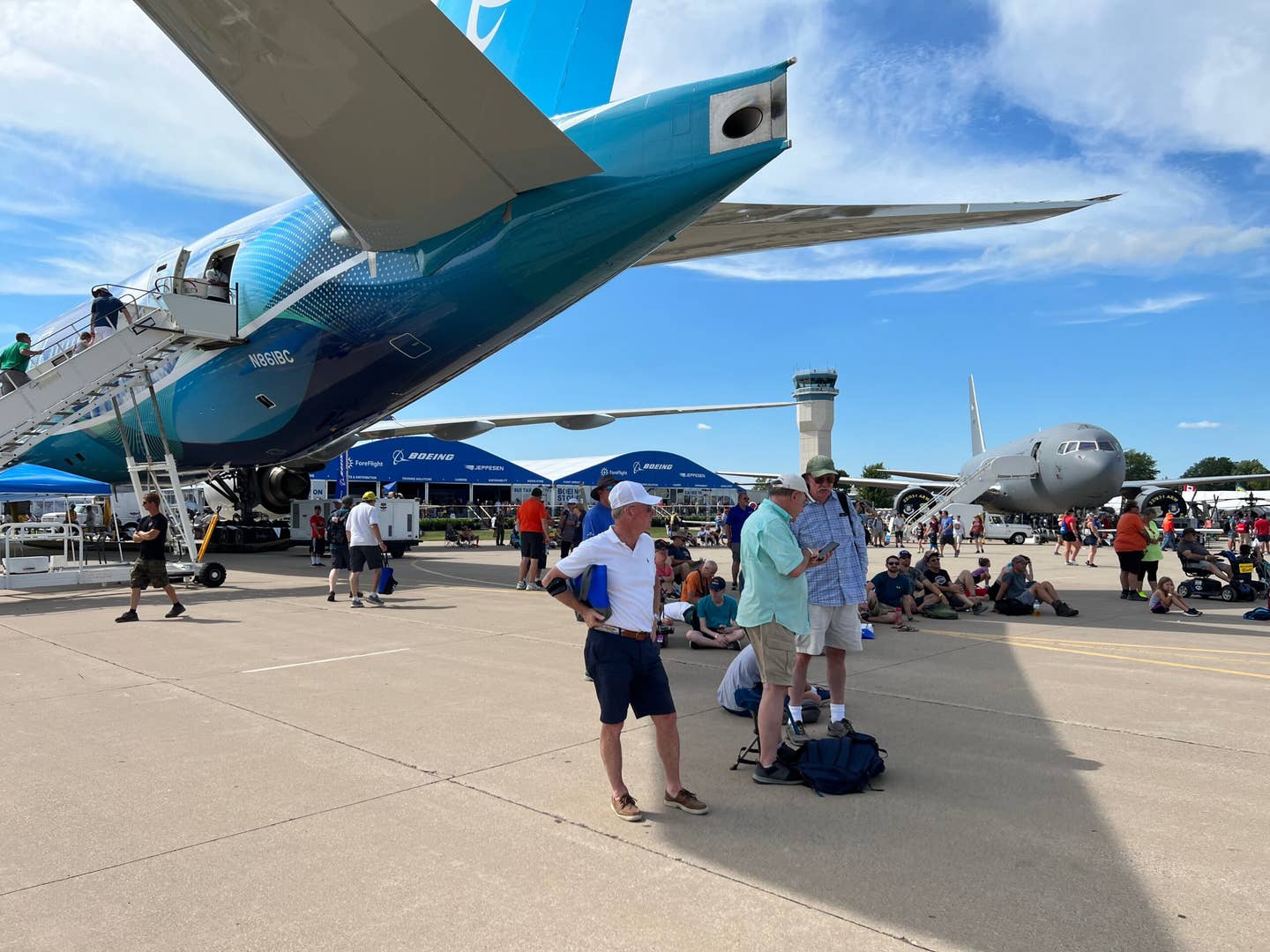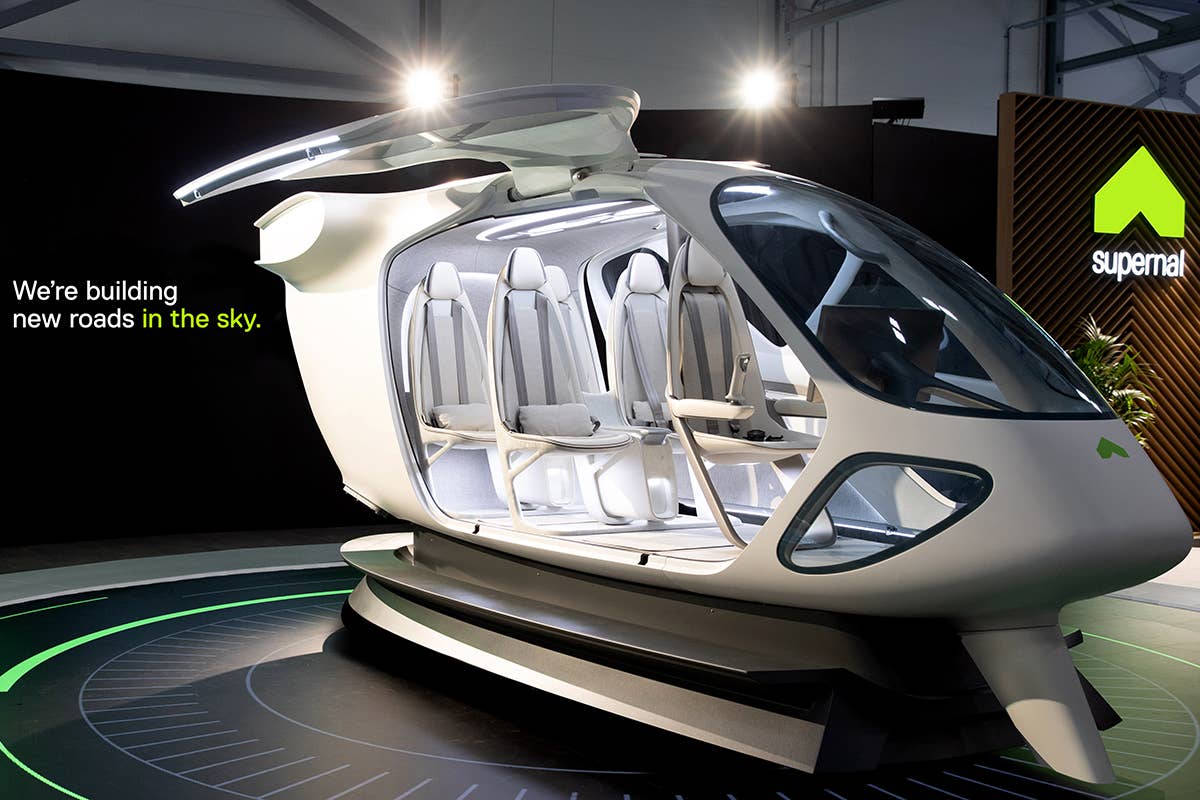
Flying Magazine proudly introduces Top 100 Airplanes: Platinum Edition, which celebrates our Flying book, entitled Flight: 100 Greatest Aircraft. In creating the book, we decided to include some airplanes that should not have been left off the original Top 100 Airplanes list; the hard part was kicking out 20 great airplanes to make way for the new guys. When you get to number one, you'll notice the old top dog has been dethroned. We won't give away the ending, but suffice it to say, the new number one is an airplane that perfectly captures the essence of what Flying has been for many, many decades. Enjoy!
Flight: 100 Greatest Aircraft, which provides more stunning full-color photography and delves even deeper into these beloved aircraft, is available to order here.
- Aviat Husky in Photos
- Manufacturer's Showcase: Aviat Husky Get exclusive online content like this delivered straight to your inbox by signing up for our free enewsletter. Flying
- Sport Pilot: Luscombes, LSAs at Night, Medicals Get exclusive online content like this delivered straight to your inbox by signing up for our free enewsletter. Flying archives
- Diamond DA40 XLS in Photos
- Diamond Introduces DA40 XLT for 2013 Get exclusive online content like this delivered straight to your inbox by signing up for our free enewsletter. Flying
- Pilatus PC-12 in Photos
- Why I Fly a Pilatus PC-12
- Pilatus PC-12 Versus the World Get exclusive online content like this delivered straight to your inbox by signing up for our free enewsletter. Flying
- 51 Heroes of Aviation Get exclusive online content like this delivered straight to your inbox by signing up for our free enewsletter. Flying
- What Burt Rutan Did
- Burt Rutan: Icon of Homebuilding...And Space Travel Get exclusive online content like this delivered straight to your inbox by signing up for our free enewsletter. NASA
- Video: Eclipse Will Build New Jets Again
- Eclipse Jet Officially Back in Production Get exclusive online content like this delivered straight to your inbox by signing up for our free enewsletter. Flying
- TBM 850 in Photos
- TBM 850: Cargo Hauler?
- TBM 850: 100 Years of History in Photos Get exclusive online content like this delivered straight to your inbox by signing up for our free enewsletter. Flying
- F22 Raptor: The Deadliest Fighter Jet Goes Operational Get exclusive online content like this delivered straight to your inbox by signing up for our free enewsletter. U.S. Air Force
- Canyonland Cruiser: Cessna 208B
- Cessna to Assemble Caravans in China
- Cessna Grand Caravan EX
- FAA Approves Wipaire Floats for Cessna Grand Caravans Get exclusive online content like this delivered straight to your inbox by signing up for our free enewsletter. Flying
- Hawker Beechcraft Through the Years Get exclusive online content like this delivered straight to your inbox by signing up for our free enewsletter. Flying
- Bombardier Global 6000 Photos Get exclusive online content like this delivered straight to your inbox by signing up for our free enewsletter. Flying
- Aspen Option for Robinson
- Robinson Doubled Production Last Year Get exclusive online content like this delivered straight to your inbox by signing up for our free enewsletter. Flying
- New Amelia Earhart Search Mission Begins Get exclusive online content like this delivered straight to your inbox by signing up for our free enewsletter. NASA
- Falcon 7X in Photos Get exclusive online content like this delivered straight to your inbox by signing up for our free enewsletter. Flying
- Used Airplane Report: Bonanza vs. Baron
- Photo Gallery: Hawker Beechcraft Through the Years Get exclusive online content like this delivered straight to your inbox by signing up for our free enewsletter. Flying
- Piaggio P.180 Avanti II in Photos Get exclusive online content like this delivered straight to your inbox by signing up for our free enewsletter. Flying
- Piper Malibu: A New Airplane for a New Day Get exclusive online content like this delivered straight to your inbox by signing up for our free enewsletter. Flying
- Phenom 100 Photo Gallery Get exclusive online content like this delivered straight to your inbox by signing up for our free enewsletter. Flying
- A Family Affair Get exclusive online content like this delivered straight to your inbox by signing up for our free enewsletter. Gavin Conroy/Classic Aircraft Photography
- A New Take on the Faithful Cherokee Six Get exclusive online content like this delivered straight to your inbox by signing up for our free enewsletter. Flying
- New Learjets Progress Toward 2013 Deliveries
- Was the Learjet the First VLJ?
- 50 Years of Learjets Get exclusive online content like this delivered straight to your inbox by signing up for our free enewsletter. Flying
- Photo Gallery: The RVs of Van's Aircraft
- The RV Nation
- Van's Aircraft Factory Mysteries Revealed Get exclusive online content like this delivered straight to your inbox by signing up for our free enewsletter. Flying
- B-29 Superfortress: Bockscar
- Video: World's Only Flying B-29 in Action
- Photo Gallery: P-51 and B-29 Warbird Tour
- Doc's Friends to Revive B-29 Superfortress
- B-29 Flies Again but Big Questions Remain Get exclusive online content like this delivered straight to your inbox by signing up for our free enewsletter. Flying
- Citation X Grows Winglets
- Cessna Spells Citation X
- First Production Cessna Citation X Rolls Out
- Cessna Citation X Closer to Reclaiming Speed Crown Get exclusive online content like this delivered straight to your inbox by signing up for our free enewsletter. Flying
- Back to Prime Time
- Photo Gallery: Mooney M20 Get exclusive online content like this delivered straight to your inbox by signing up for our free enewsletter. Flying
- Kitfox-Lite Reborn as an Ultralight
- Photo Gallery: Popular Homebuilt Aircraft Get exclusive online content like this delivered straight to your inbox by signing up for our free enewsletter. Flying
- Photo Gallery: Tuskegee Airmen Stearman Get exclusive online content like this delivered straight to your inbox by signing up for our free enewsletter. Flying
- Gulfstream G650, 280 Arrive at EBACE in Style
- New Gulfstream G650
- We Fly Gulfstream G650 Get exclusive online content like this delivered straight to your inbox by signing up for our free enewsletter. Flying
- Photo Gallery: Flying Fat Albert
- Dangerous Flying Jobs Get exclusive online content like this delivered straight to your inbox by signing up for our free enewsletter. Flying
- Pilot Report: Cessna Turbo Skylane
- Pilot Report: Cessna 182 JT-A Get exclusive online content like this delivered straight to your inbox by signing up for our free enewsletter. Flying
- The CitationJet Up Close
- Twenty Years of the CitationJet
- Cessna's Amazing CJs Get exclusive online content like this delivered straight to your inbox by signing up for our free enewsletter. Flying
- King Air 350ER: Flying Fuel Tank
- A Faster King Air Get exclusive online content like this delivered straight to your inbox by signing up for our free enewsletter. Flying
- Wright Brothers Model B Flyer Replica Crashes
- Fly & Dine: First Flight Airport (KFFA)
- Wright Brothers: Little Known Secrets to their Success Get exclusive online content like this delivered straight to your inbox by signing up for our free enewsletter. Flying
- Photo Gallery: A Look Back at NASA's Shuttle Program Get exclusive online content like this delivered straight to your inbox by signing up for our free enewsletter. Flying
- Cirrus SR22 in Photos
- 10 Years of the Cirrus SR22
- 10 Ways the SR22 Changed Flying
- Generation 5 Cirrus SR22 Get exclusive online content like this delivered straight to your inbox by signing up for our free enewsletter. Flying
- Cessna 172: Still Relevant
- A Cessna 172 Links Three Generations
- Redhawk 101 Get exclusive online content like this delivered straight to your inbox by signing up for our free enewsletter. Flying
- Video: Memphis Belle Gets a Facelift
- B-17 Destroyed, Seven People Walk Away Get exclusive online content like this delivered straight to your inbox by signing up for our free enewsletter. Flying
- Troubled P-51 Lands Safely After Help from Bob Hoover
- Photo Gallery: P-51 and B-29 Warbird Tour Get exclusive online content like this delivered straight to your inbox by signing up for our free enewsletter. Scott Slocum
- Drones a Coming Crisis for GA
- Map Shows Drone Use Throughout U.S. Get exclusive online content like this delivered straight to your inbox by signing up for our free enewsletter. Flying
- Piper Cub Seaplane Discovery Flights Get exclusive online content like this delivered straight to your inbox by signing up for our free enewsletter. Jim Koepnick
- Video: DC-3 "House Tour"
- Video: A DC-3 Tribute
- Jetman Flies with the DC-3
- Famed DC-3 Returns to the Skies Get exclusive online content like this delivered straight to your inbox by signing up for our free enewsletter. Flying

Sign-up for newsletters & special offers!
Get the latest FLYING stories & special offers delivered directly to your inbox

